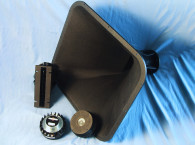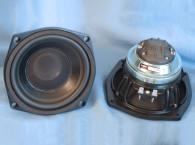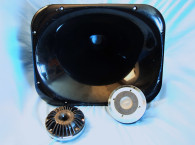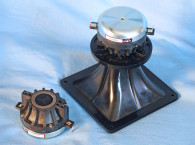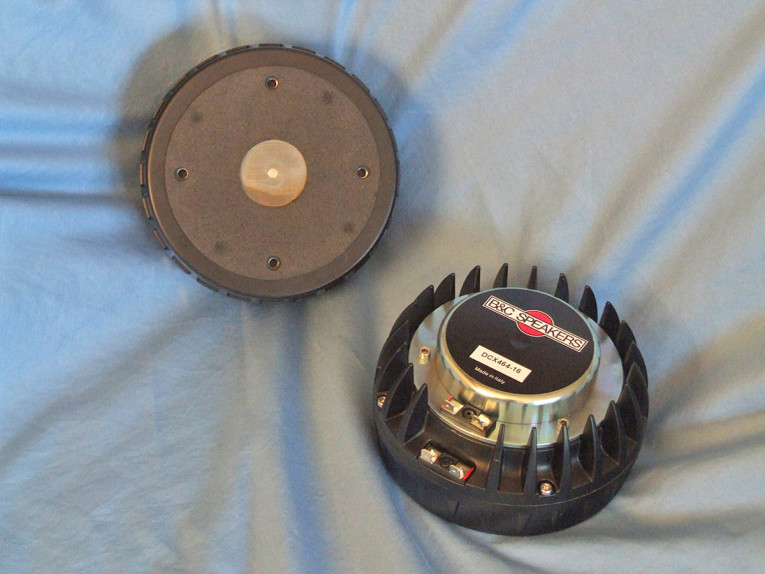
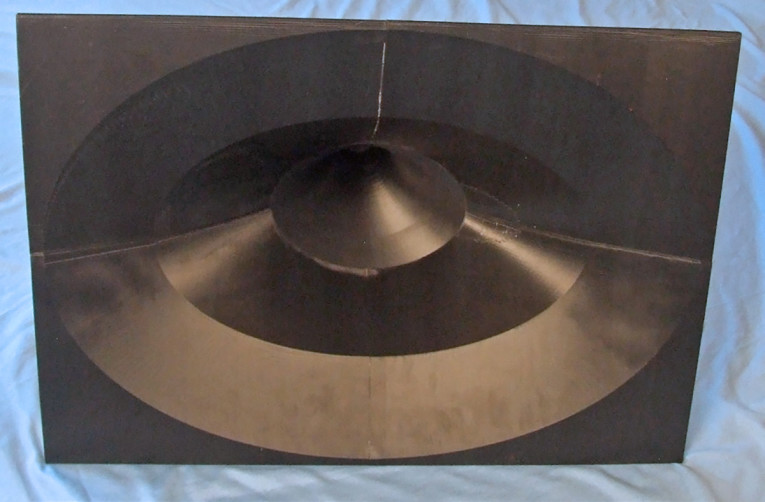
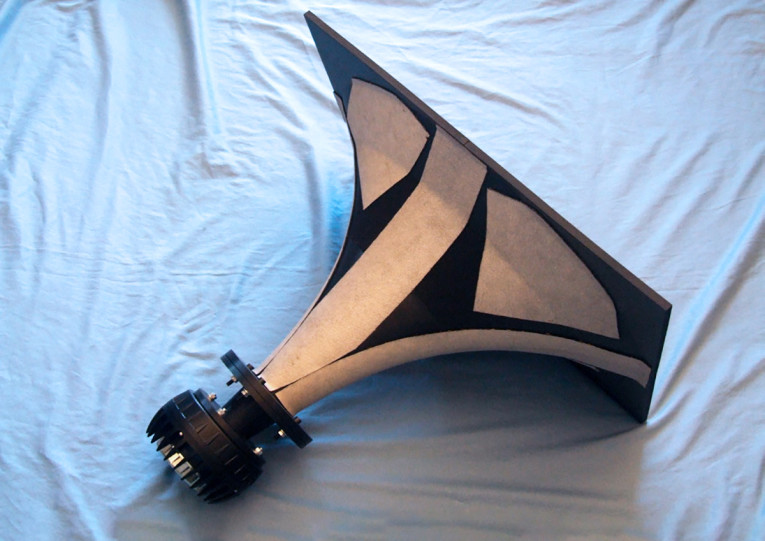
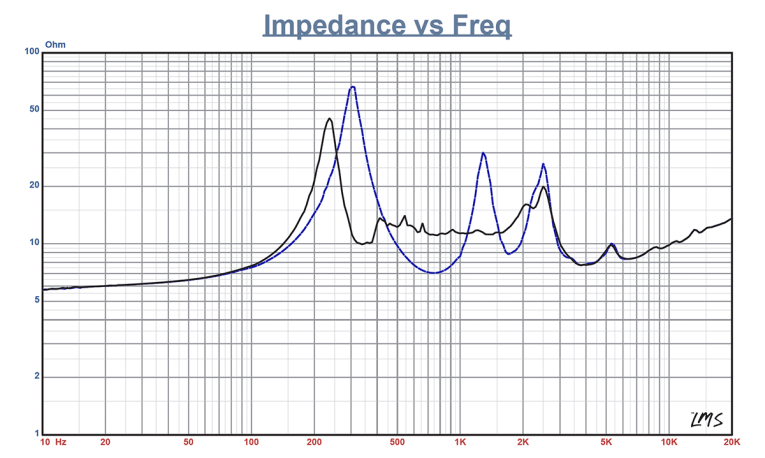
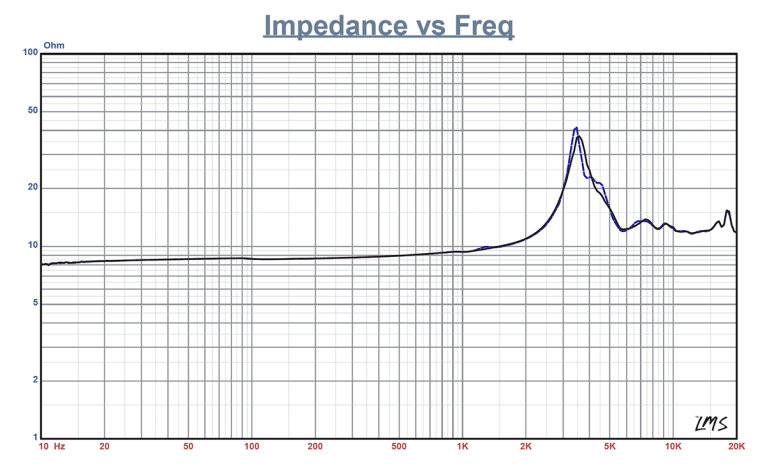
Also unusual is the fact that the DCX464 compression driver and the accompanying horn measure down to an honest 300 Hz, which is quite a low frequency considering only a few OEM horns on the market go even as low as 400 Hz. To have that low a cut-off frequency, the horn (see Photo 2 and 3) supplied with the DCX464 is huge with a mounting flange that measures 23.5” × 17.5” and a depth of 17.5”!
B&C Speakers’ Tromba horn (Tromba is Italian for Trumpet) is 3D printed and a fiberglass reinforced prototype with an 80° × 60° coverage pattern in the midrange. In terms of features, the DCX464 ring radiator is listed as a 1.4” (36 mm) throat compression driver, and that is for both the midrange driver and the high-frequency driver, which means that B&C Speakers has found a way to mix both drivers in the same throat. This is done with a patent-pending midrange integrator that allows both diaphragms to work together over a wide frequency range without causing any major magnitude or phase errors.
The midrange compression driver has 12 Ω nominal impedance, continuous power handling of 220 W, 110.3 dB (1 W/1 m) sensitivity, and a frequency range of 300 Hz to 5.5 kHz. Other features include a neodymium motor structure, a high-temperature polymer diaphragm (Peek), 100 mm (4”) diameter voice coil wound with aluminum wire on a nonconducting Kapton former, and a recommended crossover frequency of 300 Hz.
Nominal impedance for the high-frequency section is 16 Ω, and has a 160 W continuous power handling rating. The voice coil diameter is 65 mm (2.56”), also wound with aluminum wire on a non-conducting Kapton former. Like the midrange, the high-frequency unit uses a neodymium motor structure, but incorporates a copper shorting ring (Faraday shield). It also utilizes a high-temperature polymer diaphragm (Peek), which resulted in a somewhat higher sensitivity of 112.5 dB (1 W/1 m with an applied RMS voltage of 4 V). The recommended crossover frequency for the DCX464 high-frequncy device is 3.2 kHz to 4 kHz.
I began testing of the DCX464/Tromba horn using the LinearX LMS analyzer to produce the 300-point stepped sine wave impedance plot for the mid-frequency section shown in Figure 1. The solid black curve represents the DCX464 midrange mounted on the horn and the dashed blue curve represents the midrange compression driver without the horn. With a 6.10 Ω DCR (Re), the minimum impedance of the DCX464’s mid-frequency/Tromba horn section was 7.1 Ω and at 3.79 kHz.
Figure 2 gives the same impedance data for the DCX464’s high-frequency section, with the solid black curve representing the high-frequency driver mounted on the horn and the dashed blue curve represents the high-frequency compression driver without the horn. With a 8.71 Ω DCR (Re), the minimum impedance of the DCX464’s high-frequency /Tromba horn section was 11.69 Ω and at 12.14 kHz.

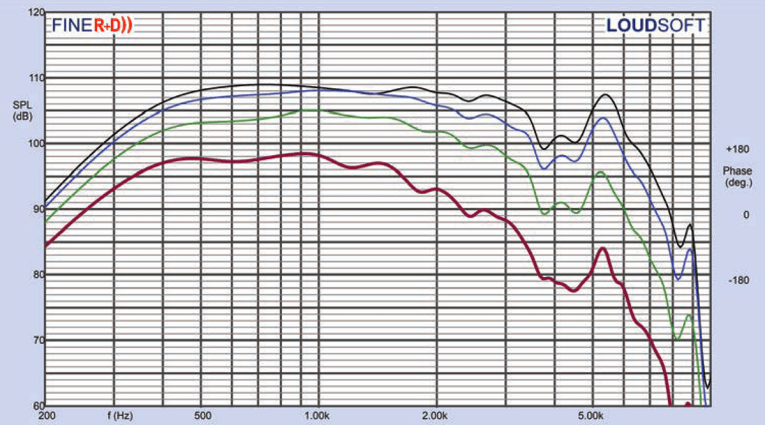
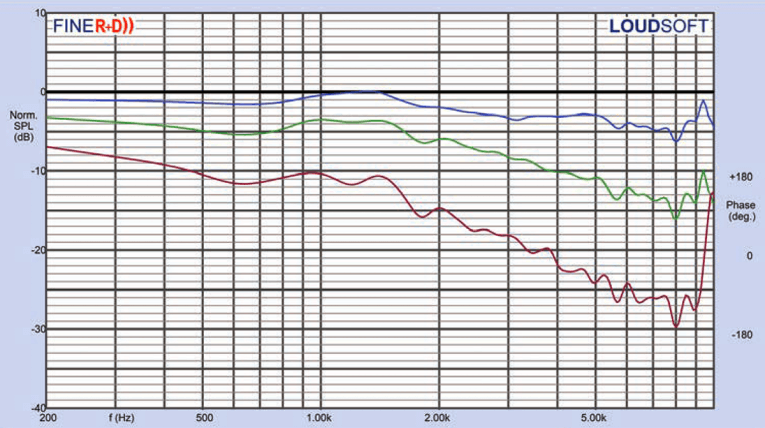
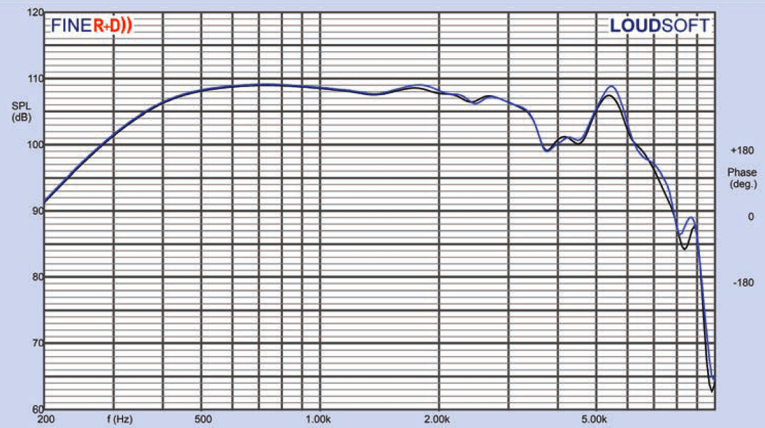
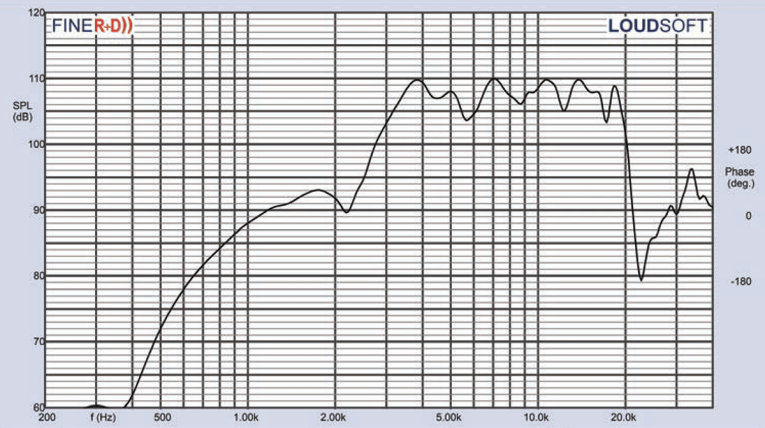
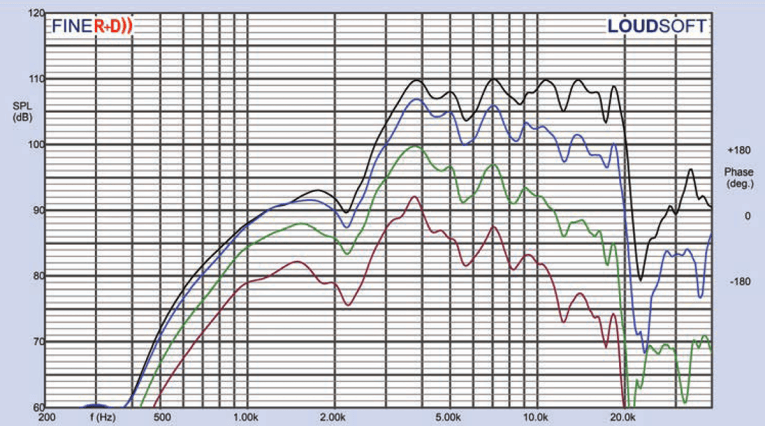

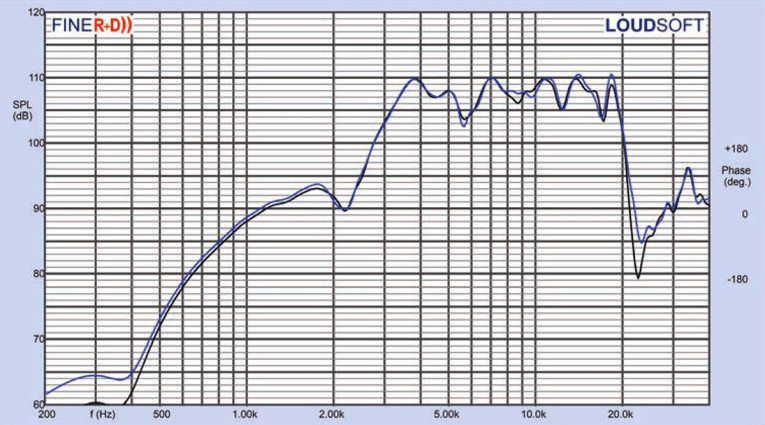
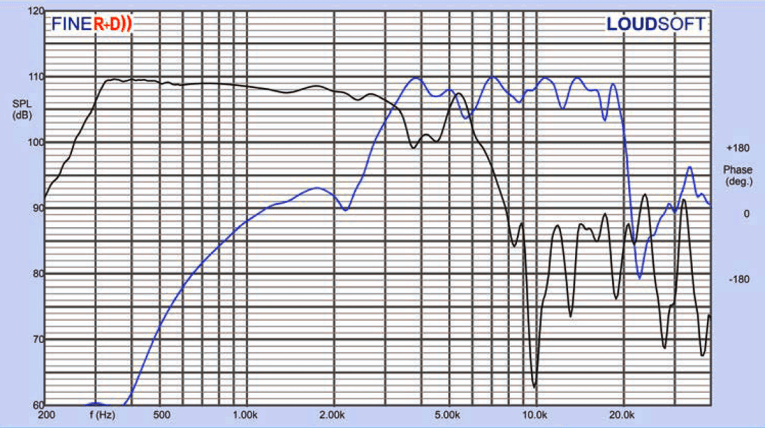
For the next set of SPL measurements, I free-air mounted the DCX464/Tromba 3D printed horn combination without an enclosure and measured just the horizontal on- and off-axis at 2.83 V/1 m of the midrange section, again using the Loudsoft FINE R+D analyzer (provided by Loudsoft) and the GRAS 46BE 1/4” microphone (courtesy of GRAS Sound & Vibration). The analyzer was set up to measure the 200 Hz to 40 kHz frequency response (using a 192 kHz sampling rate) at 2 V/0.5 m normalized to 2.83 V/1 m. Sweeps were performed at 0°, 15°, 30° and 45°. Only horizontal measurements were taken out to 45° and not horizontal and vertical out to 60° primarily because the horn supplied by B&C Speakers is a prototype and not yet in production.
Since the additional measurements, including the CLIO polar plots, primarily characterize the horn behavior, I will save those if and when a production version of Tromba is released. Figure 3 illustrates the on-axis frequency response of the midrange compression driver/horn combination. This measurement was done by splicing a “close” field measurement with the GRAS microphone located flush with the horn opening to the windowed and normalized 2 V/0.5 V measurement. (The FINE R+D software splice routing is excellent and simple to operate.) As can be seen, the -3 dB frequency of the DCX464 mounted in the prototype horn was exactly 300 Hz! Overall the midrange response is a smooth ±1.8 dB exhibiting no major anomalies with a slightly declining response as frequency increases from 300 Hz to 3 kHz. The low-pass roll-off of the mid-frequency section has a single 8 dB peak mode at about 5.3 kHz.
Figure 4 depicts the on- and off-axis (0° to 45°) response in the horizontal plane. Figure 5 displays the normalized horizontal plane response. Figure 6 illustrates the two-sample SPL comparison showing the two B&C Speakers DCX464 mid-frequency section compression drivers matched to less than 1.0 dB throughout the operating range of the midrange transducer.
For the high-frequency section, Figure 7 gives the on-axis response, which measures a rather flat ±3 dB from 3.3 kHz to 20 kHz. Figure 8 illustrates the on- an off-axis 0° to 45° frequency response, with the normalized version of Figure 8 given in Figure 9. Figure 10 compares both samples of the high-frequency section—with the samples matched to less than 1 dB except for a couple of areas centered on 5.7 kHz and 8.9 kHz, where it was between 1 dB to 2 dB.
One of the important features for these coaxial drivers is the amount of overlap in the frequency range of the mid-frequency and high-frequency sections as can be seen in Figure 11. This almost 1 octave overlap is certainly important when it comes to developing a crossover for this device, and obviously gives you more choices of where to place it. However, 4 kHz seems to be the sweet spot according Bennett Prescott, B&C Speakers’ Sales and Operations Director for North America.
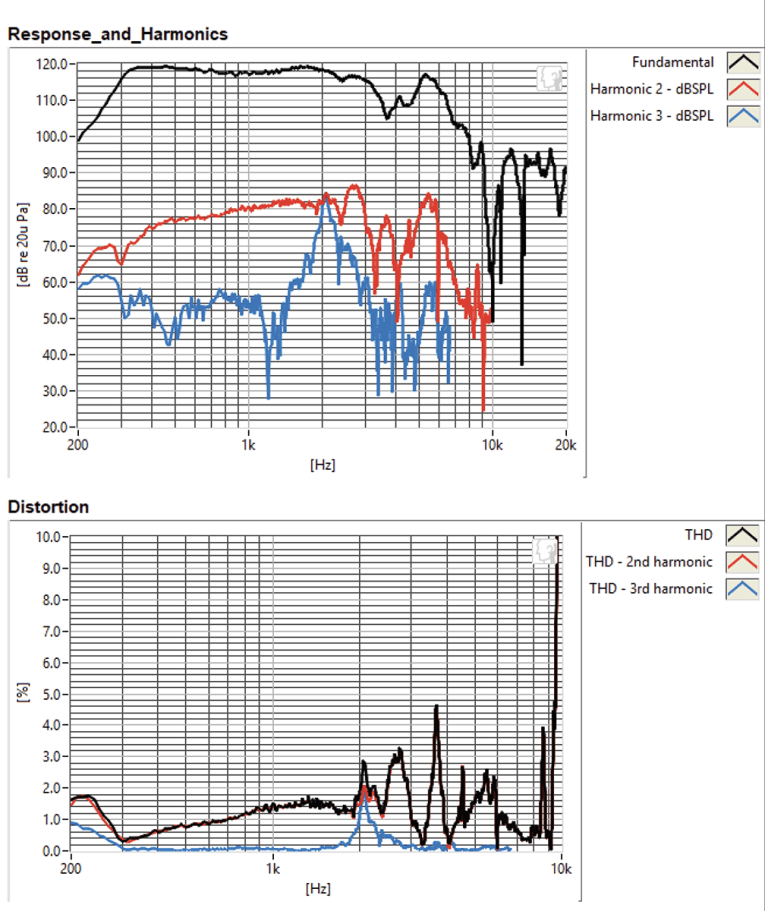

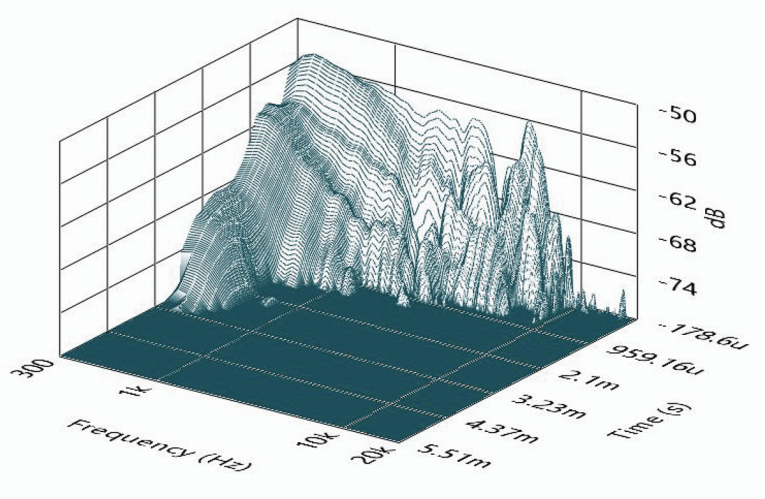
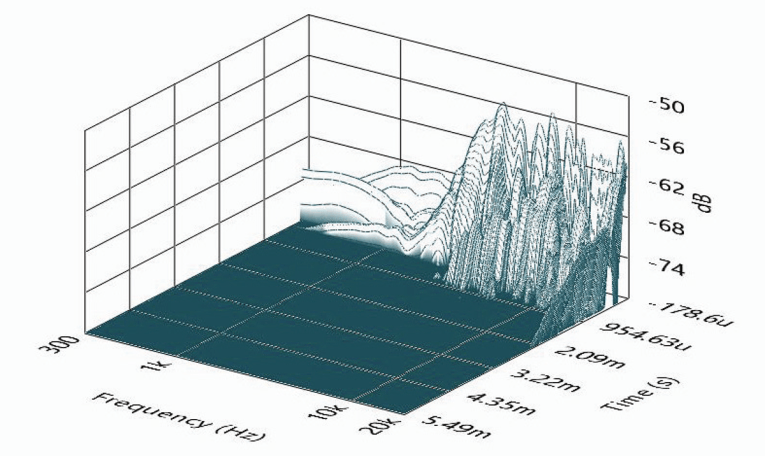
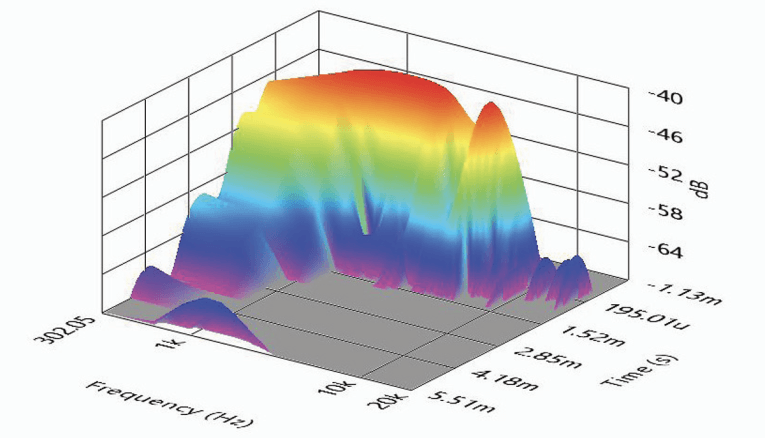
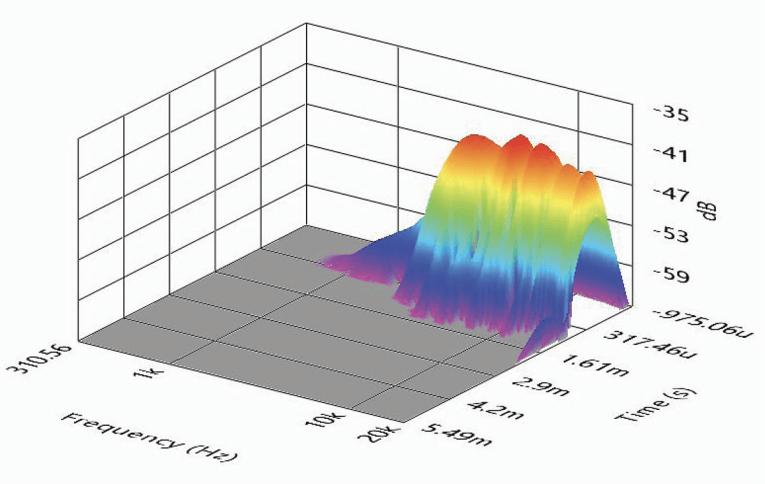
I performed the same test for the high-frequency section (see Figure 13) with a 104 dB voltage level of 1.52 V. I then set up SoundCheck 17 to generate a 2.83 V/1 m impulse response for both midrange and high-frequency sections of the driver/horn combination and imported the data into Listen’s SoundMap Time/Frequency software. Figure 14 shows the resulting cumulative spectral decay (CSD) waterfall plots for the midrange. Figure 15 shows the resulting CSD waterfall plots for the high-frequency driver. Figure 16 shows the Short Time Fourier Transform (STFT) plots in for the midrange section. Figure 17 shows the STFT plots for the high-frequency driver.
From the measurements, the B&C Speakers DCX4464 1.4” coaxial compression driver displays excellent performance for a high-power handling package, and given the wide frequency range from 300 Hz to 20 kHz in a single horn device, it’s a bit of a game changer for B&C Speakers. For more information, visit www.bcspeakers.com. VC
This article was originally published in Voice Coil, October 2019.




